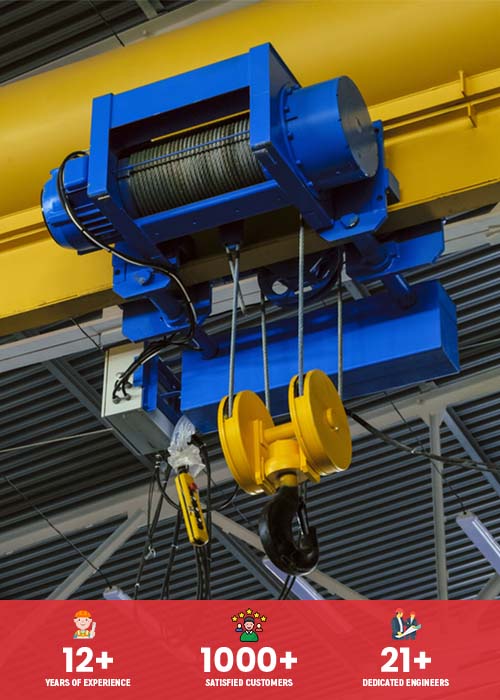What is a Goods Lift and How It Helps in Industrial and Commercial Lifting
In today’s fast-paced industrial and commercial world, the movement of heavy goods and materials is a critical part of daily operations. One of the most efficient ways to ensure safe and easy movement of such loads is by using a goods lift. Whether in factories, warehouses, retail outlets, or construction sites, goods lifts play a vital role in improving workflow, saving time, and enhancing safety. If you are looking for reliable equipment for material transportation, choosing the right goods lift manufacturers in Ahmedabad can make a big difference in performance, durability, and operational efficiency.
What is a Goods lift?
A goods lift is a specially designed elevator used for transporting goods, materials, or heavy loads between different floors of a building. Unlike passenger lifts, these lifts are built to handle high-capacity loads, often ranging from a few hundred kilograms to several tonnes. They are widely used in industrial plants, storage facilities, malls, hotels, hospitals, and many other commercial spaces where large volumes of goods need to be moved vertically.
Understanding the Function of a Goods Lift
Goods lifts operate on the same basic principle as passenger elevators, but their design is customised to handle bulky and heavy loads. They are fitted with strong platforms or cabins, reinforced doors, and advanced safety features to ensure both the load and the operators are protected during use. The operation can be manual, semiautomatic, or fully automatic, depending on the requirements of the facility.
The cabins are usually made of durable materials such as stainless steel or powder-coated steel to withstand wear and tear. The doors are designed to provide easy loading and unloading, and the lifts can be operated through push buttons or remote controls. Depending on the structure of the building and the nature of the work, goods lifts can be hydraulic, traction-based, or machine-roomless (MRL) systems.
Types of Goods Lifts Commonly Used
- Hydraulic Goods Lifts- Operated by hydraulic power, these lifts are ideal for buildings with fewer floors and heavy load requirements. They are smooth in operation and easy to maintain.
- Traction Goods Lifts- Using steel ropes and counterweights, these lifts are faster and more energy-efficient, making them suitable for taller buildings.
- Scissor Lifts- These lifts use a crisscross mechanism to raise and lower the platform and are often used in loading docks or warehouses.
- Cage Lifts- Simple yet sturdy, these lifts use a cagetype enclosure to move goods and are common in factories and storage units.
Benefits of Using a Goods Lift in Industrial and Commercial Sectors
- Saves Time and Increases Efficiency
Manually moving heavy goods between floors is time-consuming and labor-intensive. Goods lifts streamline this process, allowing for quicker movement and reducing downtime. This means employees can focus more on core tasks rather than heavy lifting.
- Enhances Workplace Safety
Lifting heavy goods manually can lead to accidents and injuries. Goods lifts are designed with safety in mind, ensuring that both the goods and the operators are protected during transit. Features like overload sensors, emergency brakes, and safety gates add an extra layer of protection.
- Handles Heavy Loads with Ease
Goods lifts are built to carry significantly heavier loads than passenger lifts. This makes them perfect for industries dealing with large equipment, raw materials, or bulk stock.
- Reduces Labor Costs
By minimizing manual handling, businesses can cut down on the number of workers required for transportation tasks. This not only reduces labor costs but also improves productivity.
- Customizable for Specific Needs
Reputed manufacturers offer customization options in terms of size, capacity, speed, and safety features to meet the unique needs of a facility.
Goods Lifts in Commercial Spaces
In commercial environments such as malls, hotels, and hospitals, goods lifts ensure that supplies, furniture, food trays, and maintenance equipment are transported without disturbing customers or guests. In a hotel, a service lift can deliver laundry or kitchen supplies to different floors discreetly. In malls, they help stock up retail stores without interrupting shopper traffic.
Goods Lifts in Industrial Facilities
Factories, warehouses, and production plants often deal with raw materials, finished products, and machinery parts that are heavy and difficult to transport manually. Goods lifts make it possible to move these loads efficiently, especially in multilevel buildings. In manufacturing units, they speed up operations by delivering materials directly to production lines.
Conclusion
A goods lift is more than just a piece of equipment and is a key investment for any business that regularly moves heavy materials. From improving safety and efficiency to reducing costs and enhancing productivity, the benefits of installing a goods lift are undeniable. Whether in an industrial plant or a commercial building, having the right lift can significantly streamline operations.




